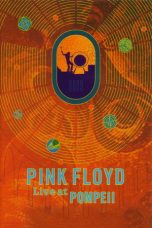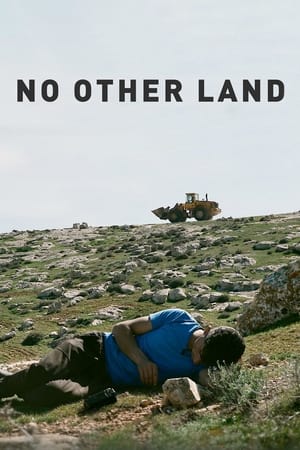The Salt of the Earth (2014) Movie Review: A Profound Exploration of Human Resilience and Art
Introduction
“The Salt of the Earth,” directed by Wim Wenders and Juliano Ribeiro Salgado, is a deeply moving documentary that offers a compelling look into the life and work of Brazilian photographer Sebastião Salgado. Released in 2014, the film not only celebrates Salgado’s extraordinary photographic career but also delves into the broader themes of human suffering, environmental devastation, and redemption. The documentary is a testament to the power of art to capture and convey the profound complexities of the human condition.
Plot Summary
The documentary follows the life and career of Sebastião Salgado, a renowned photographer whose work has chronicled some of the most significant and challenging moments of the 20th and 21st centuries. Through Salgado’s striking black-and-white images, “The Salt of the Earth” provides a visual journey through his most iconic projects, including his coverage of famine in Africa, the plight of displaced peoples, and the impact of industrialization on the natural world.
The film intertwines Salgado’s personal narrative with his professional achievements. It explores his early life in Brazil, his transition from economics to photography, and his experiences covering global conflicts and environmental issues. As Salgado reflects on his career, the documentary reveals the emotional toll his work has taken on him and his profound commitment to documenting human suffering and resilience.
The film also highlights Salgado’s efforts to restore the environment on his family’s land in Brazil. After decades of photographing devastation, Salgado and his wife, Lélia, embarked on a project to reforest their land, transforming it into a thriving sanctuary. This personal redemption arc serves as a powerful counterpoint to the often harrowing subjects of his photographs.
Character Analysis
Sebastião Salgado emerges as the central figure in the documentary, portrayed as both an artist and a humanitarian. His photographs speak to his deep empathy and commitment to capturing the essence of his subjects, whether they are refugees, workers, or natural landscapes. Salgado’s contemplative and introspective nature is evident throughout the film, as he reflects on the impact of his work and the personal journey it represents.
Lélia Deluiz Wanick Salgado, Sebastião’s wife, plays a crucial role in the film. Her support and involvement in the environmental restoration project are central to the narrative. Her insights into Salgado’s work and their shared vision for a better world add depth to the documentary and highlight the collaborative nature of their efforts.
The film also features interviews with Salgado’s colleagues, family members, and critics, offering additional perspectives on his work and its significance. These interviews provide context and enrich the viewer’s understanding of Salgado’s impact on the field of photography and beyond.
Direction and Cinematography
Wim Wenders and Juliano Ribeiro Salgado’s direction is both respectful and revelatory. They skillfully balance the exploration of Salgado’s career with personal anecdotes and reflections, creating a narrative that is both informative and intimate. The film’s structure allows viewers to appreciate the evolution of Salgado’s work while gaining insight into the man behind the camera.
The cinematography, including the use of Salgado’s own black-and-white photographs, is a standout feature of the documentary. The film’s visual style effectively conveys the stark contrasts and profound emotions captured in Salgado’s work. The careful selection of images and the integration of these photographs into the narrative enhance the documentary’s impact and provide a visceral connection to the subjects of Salgado’s photography.
Themes and Symbolism
“The Salt of the Earth” explores several poignant themes, including human suffering, environmental degradation, and the quest for redemption. Salgado’s photographs depict the harsh realities faced by people around the world, shedding light on issues such as poverty, war, and displacement. The film underscores the role of photography in raising awareness and fostering empathy.
The theme of environmental restoration is particularly powerful, symbolizing hope and renewal. Salgado’s efforts to reforest his land represent a broader desire to heal and rejuvenate the natural world, offering a hopeful counterpoint to the often grim subjects of his earlier work.
The documentary also reflects on the role of art in capturing and communicating the human experience. Salgado’s photographs are presented as both a reflection of and a response to the world’s challenges, highlighting the transformative power of visual storytelling.
Available Streaming Services and Rental/Purchase Options
For viewers in America, “The Salt of the Earth” (2014) is available for streaming on various platforms. As of now, you can watch the film on:
- Amazon Prime Video: The film is available for rental or purchase. Renting the movie typically costs around $3.99, while purchasing it is approximately $12.99.
- Apple iTunes: Available for both rental and purchase, with prices similar to Amazon Prime Video.
- Google Play Movies & TV: You can rent or buy the film here, with rental prices around $3.99 and purchase prices about $12.99.
- Vudu: Another option for renting or purchasing the film, offering high-definition streaming at comparable prices.
- Hulu: The film is available for streaming with a subscription.
Conclusion
“The Salt of the Earth” is a remarkable documentary that provides a profound and moving portrait of Sebastião Salgado and his work. Through its exploration of Salgado’s career, personal journey, and environmental restoration efforts, the film offers a compelling commentary on the power of art to document, reflect, and inspire change.
For those interested in the intersection of art and social justice, “The Salt of the Earth” is a must-watch. Its availability on multiple streaming platforms ensures that audiences can easily access and appreciate this powerful and thought-provoking documentary.
















